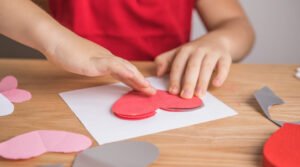If you read last week’s blog post and decided that you might be experiencing too much stress in your life, then we have some suggestions for you. Science has shown that there are two low-cost and fun ways to cut down on your feelings of stress: feeling gratitude and laughing!
Feelings of gratitude and laughter have been scientifically shown to have positive effects on physical and mental health. They both:
- Decrease stress. Studies have shown that both gratitude and laughter reduce feelings of stress. They also reduce levels of stress hormones in the body. That makes it less likely that chronic stress can wear your body down.
- Boost immune system functioning. Both people who feel thankful for things in their lives and those who laugh more often seem to have stronger defenses against sickness. And people with chronic diseases, such as cancer or AIDS, and people undergoing surgery show better outcomes when they have higher levels of gratitude and/or laughter.
- Improve mood. People who feel thankful for things or tell others how much they are appreciated report feeling happier. The same is true of people who laugh more often or have a good sense of humor.
- Enhance brain function. Laughter may improve memory. It may also help your brain cells, or neurons, communicate more smoothly. Gratitude can improve attention and also has effects on the parts of the brain that control eating and sleeping.
- Improve relationships. When people tell others what they appreciate about them, relationships get a boost. Social bonds also are strengthened when people laugh and play together. People like to be around positive, happy people. Also, people who feel gratitude and laugh may be nicer to others. When you feel good, you are more likely to “pay it forward” to help others feel good as well.
So if you want to bust your stress levels, increasing your feelings of gratitude and/or how much you laugh can be helpful. The great thing about both gratitude and laughing is that they are like exercise: the more you do them, the better you feel, and the easier it gets. Here’s how you can start to build up your gratitude and laughter “muscles”.
How to Increase Your Feelings of Gratitude
- Keep a gratitude journal. Every day, write down 1-3 things that you are grateful. These could be events, people, or things. Even on your worst days, you should try to find something to write down, no matter how hard it might be. And it does not have to be something big: Janice Kaplan, author of The Gratitude Diaries, writes that one day, the only thing she could think of to be thankful for was her toes.
- Write thank-you notes. These can be addressed to people or organizations or even fictional characters. You don’t have to send them. All you need to do is list how that person has helped you and your feelings of appreciation.
- Look for the silver linings. When you are facing difficult situations, instead of focusing on the negatives, try to find something positive about them. For example, if you just got a big assignment at work that is going to take up a lot of your time, instead of focusing on that time, think about the things that you will learn that will help you do your job better in the future.
- Count your blessings. Once a week (or more often), set aside time to think about or write down the things in your life for which you are grateful. Again, these don’t have to be big (like lots of money) and you should not compare your life to those of others in order to come up with the things (like “I should be happy because I have shelter when others do not). This is not about what anyone else has or does not have. It’s just about what you are thankful for.
How to Increase Your Laughter
- Make time every day to laugh. Find something that makes you laugh and watch, listen to, or do it! This can be anything that works for you. If watching cat videos tickles your funny bone, then do it. If reading Peanuts comic strips is what makes you smile, go for it. It doesn’t have to make sense or be funny to anyone else. Your sense of humor is all that matters. (One point is important here-humor that is at the expense of or hurtful to others does not necessarily have the same effect as more positive, general humor.)
- Seek out different sources of humor. Watch online videos. Make up jokes. Try on a really funny looking hat.
- Remember funny times. Funny stories can continue to entertain long after they happened. Remembering jokes, events or people who made you laugh in the past is likely to make you laugh in the present. And sharing these with others can make the laughter contagious.
- Get your “sillies” out. Don’t be afraid to goof off and laugh at yourself, or to cause others to laugh at you. Wear the clown nose you have been keeping hidden in your desk drawer. Ham it up while you sing your favorite song at the top of your lungs. Jump in puddles. Playfulness is liberating and watching you be silly may help others feel happier as well.
So go ahead and wear your favorite silly sweater that your Aunt Martha gave you for Christmas and feel grateful while you do it. Or laugh like a hyena at your favorite video of “cats gone bad”. Your stress will go down and your brain and body will thank you for it!
Sources used:
http://www.webmd.com/women/features/gratitute-health-boost#1
https://www.helpguide.org/articles/emotional-health/laughter-is-the-best-medicine.htm
http://nymag.com/scienceofus/2016/01/how-expressing-gratitude-change-your-brain.html
https://www.psychologytoday.com/blog/prefrontal-nudity/201211/the-grateful-brain
http://www.health.harvard.edu/newsletter_article/in-praise-of-gratitude
http://time.com/3592134/laughing-health-benefits/
http://www.huffingtonpost.com/2014/01/18/tips-lighten-up-laugh-more_n_4619912.html
[divider type=”standard” text=”Go to top” full_width=”no” width=”1/1″ el_position=”first last”]
Image: © Nanditha Rao | Dreamstime.com
[divider type=”standard” text=”Go to top” full_width=”no” width=”1/1″ el_position=”first last”]





